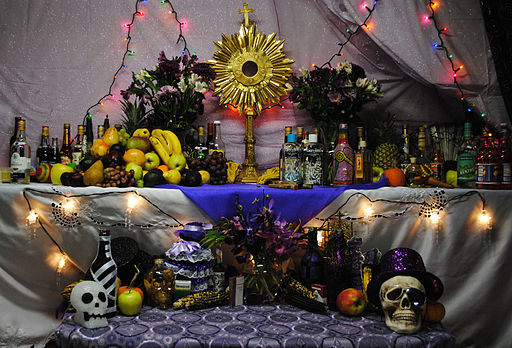Syncretic traditions

Faiths, languages, cultures, rituals, and customs frequently bounce off of and combine with one another in a process called syncretism. When we talk about religious syncretism, we are talking about the combining of one faith with another for a variety of reasons. What is created then becomes a completely new and separate religion, different in intent and belief from any of its origins. We have a number of notable examples of this in our world–the Rastafarians, Vodou, Candomble, Santeria, Gnosticism, the Unification Church, and various others.

It has often been the history, experience, and actions of colonialism around the world that has created syncretic traditions. Captured slaves often had to hide their spiritual traditions behind mainstream Christianity. Colonized peoples adapted their practices to those of the colonizers and missionaries. As various cultures ranging from Southeast Asia to the Americas to the African continent encountered European Christianity or Middle Eastern Islam, and these traditions spread across the globe, new spiritual traditions came about blending the original beliefs with the incoming faiths.
In reality, any time more than one religious or spiritual tradition encounters another, there is likely to be sharing and the rubbing off of one on the other. Christianity is a blend of Judaism, paganism and various cultural activities that are now locally included and that depend on the location of the Christian believers.
Another example is the impact of the Zoroastrians on Judaism. Zoroastrianism has a dualistic view of the universe, believing that dark and light, good and evil are in perpetual battle. There was no belief of this sort in the early Hebrew ideas, but when

the Exile happened–the Hebrews being conquered and carted off by the Babylonians to what is now Iraq–then their exposure to this dualistic belief and practice resulted in some of those ideas blending into Judaism. The concept of a devil, or something that leads the cause of evil, although not a major part of Judaism, certainly came there from Zoroastrian ideas.
And there are many more examples. Christianity adopted pagan holidays and re-branded them. Mahayana Buddhism was impacted by the movement of Christianity into China. Daoism, Confucian ideas and Christianity were all used in Moon’s Unification Church in Korea. The Baha’i started with Islam, but is also influenced by Hinduism and Buddhism.
Merriam Webster:
syncretism
Definition of syncretism

A useful start
We are only going to include a few links here that point to helpful public articles about various Syncretic traditions. This is a broad and useful area of study as one digs deeper into religious history. Using library resources to dig deeper will be useful!
Syncretism, with a focus on Asia: Khan Academy
From Africa to America: Harvard University’s Pluralism Project
Religious Syncretism in Colonial Mexico City
In Cuba, Santería flourishes two decades after ban was lifted

